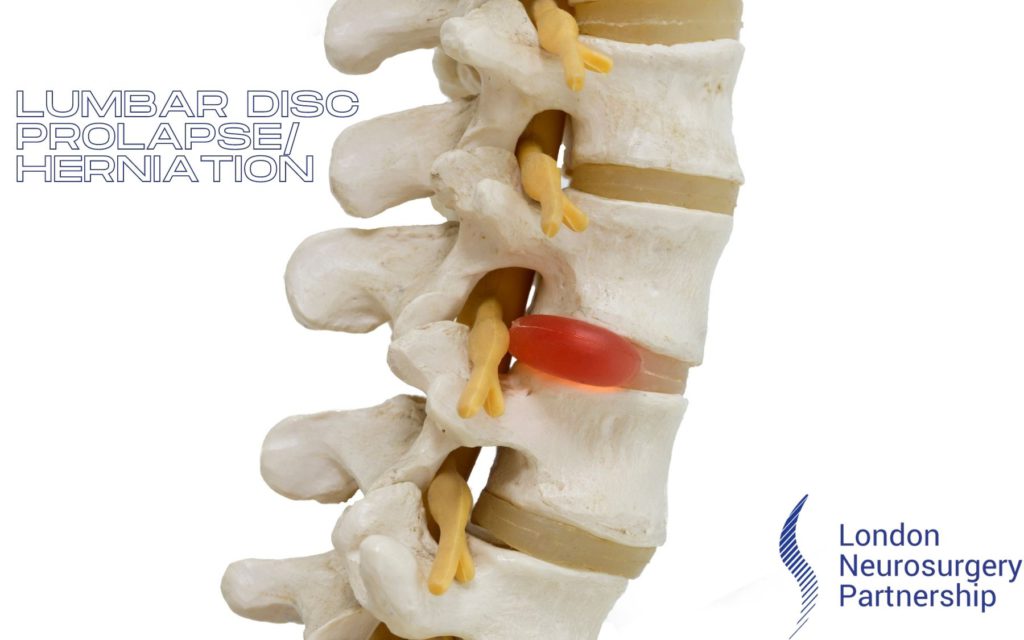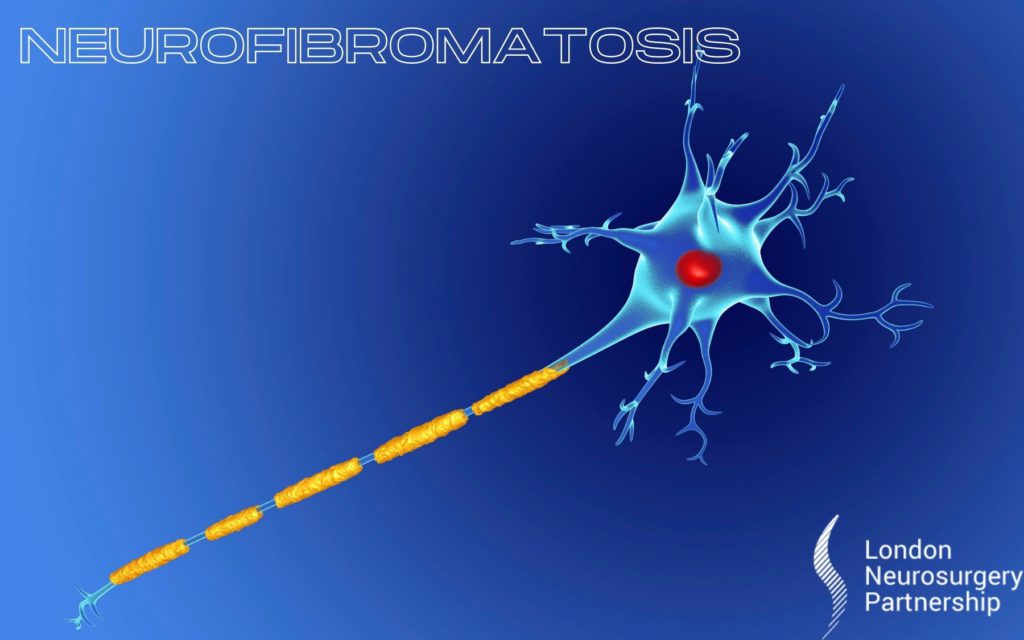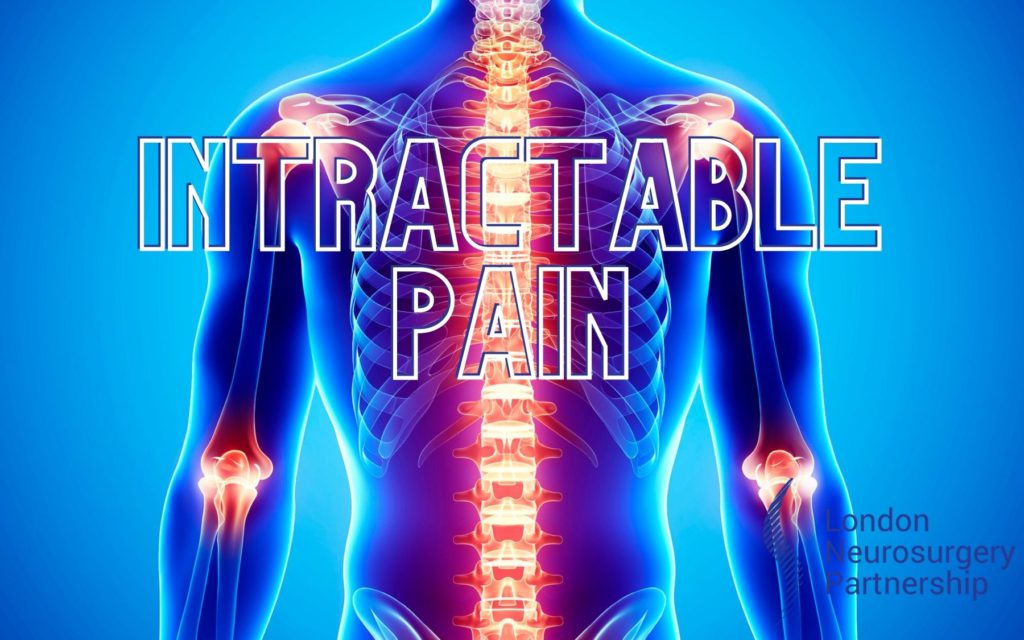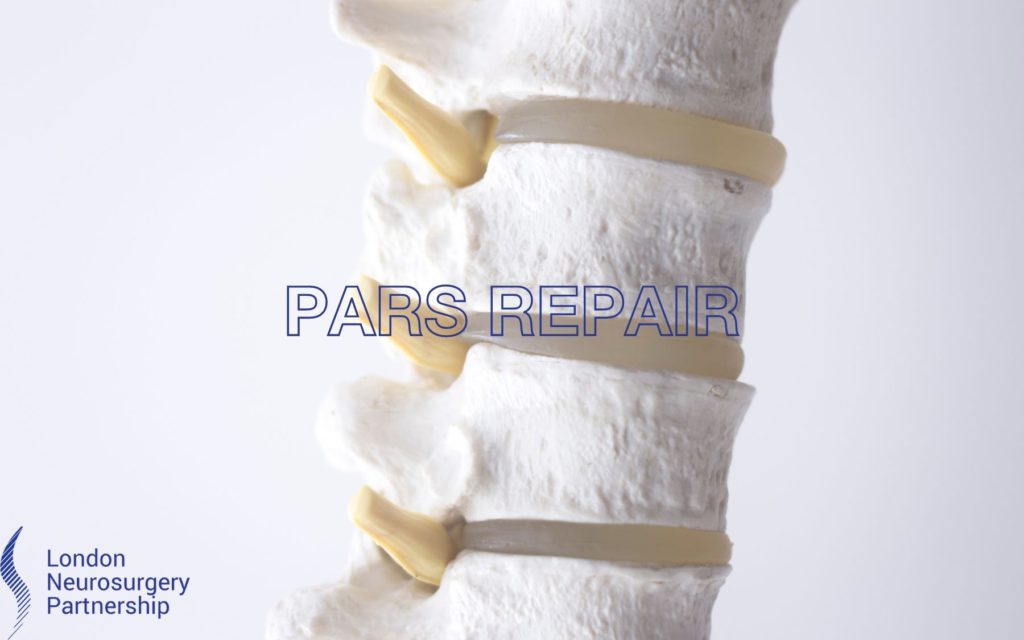
A lumbar disc herniation or ‘slipped’ disc is a term we hear all too frequently but what does it actually mean? Mr Ranjeev Bhangoo explains to us what exactly this means and how it might be treated.
The spine is made up of small bones called vertebrae. These stack on top of each other separated by intervertebral discs. The bones form a column or canal through which the spinal cord runs, these bones protect the spinal cord. The spinal discs act as shock absorbers and are made up of a tough fibrous outer layer (called annulus fibrosus) and a gelatinous inner core (nucleus pulposus).
The term slipped disc is used interchangeably with lumbar disc, lumbar disc herniation, lumbar disc protrusion and prolapsed disc but there is not one single correct phrase. If anything, the term slipped disc can be a bit misleading as the disc itself doesn’t move rather some of the inner gel-like material can leak out if the outer layer develops a crack. So how does this happen? Most discs are well hydrated and the outer layer securely encases the inner gel. However, as discs get older and degenerate they become less hydrated, flatter and the outer layer can become more brittle. This means that it is more likely to let some of the inner gel leak out. This leakage can press on nearby nerves and irritate them causing symptoms such as pain in one of the legs – sciatic type symptoms.
So how is this treated?
There are several options for treatment for a lumbar disc herniation and we start with the most conservative avoiding surgical intervention unless absolutely necessary. Usually the symptoms will settle down on their own within a few weeks. During this time, it is important to remain active, returning to work and normal daily activities.
Should the symptoms not settle then it is reasonable to consider medication in the form of Non-Steroidal Anti-inflammatory Drugs or neuropathic agents. If symptoms still do not settle down referral to a group exercise programme sometimes combined with a psychological programme can be very effective.
If all non-surgical treatment has proved ineffective or there is motor deficit such as weakness or numbness surgical options would include:
- Injections
- Radiofrequency ablation
- Discectomy
- Microdiscectomy
- Laminectomy
- Foraminotomy
- Endoscopic discectomy
- PLDD
This article is intended to inform and give insight but not treat, diagnose or replace the advice of a doctor. Always seek medical advice with any questions regarding a medical condition.
Back to spinal conditions.





0 Comments